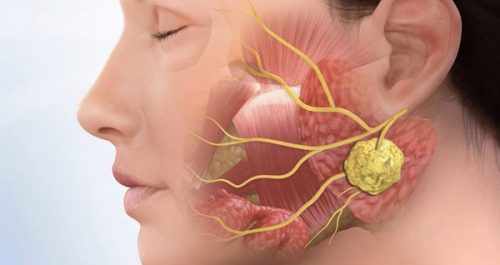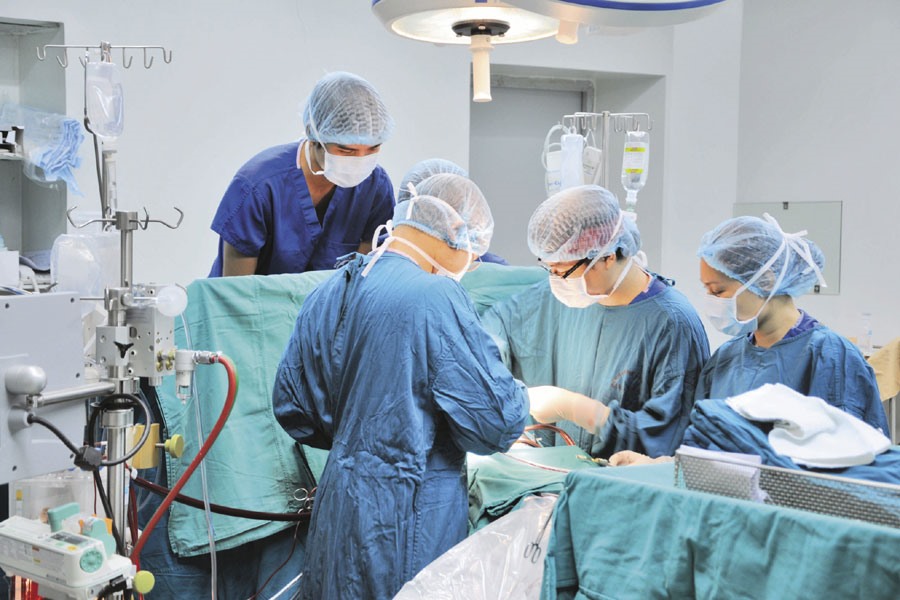Measures to help alleviate physical pain, bring psychological and spiritual relief to the patient as well as the patient's relatives are activities of palliative care.
Palliative care (CSGN) is a long-standing concept, especially in developed countries. Starting with the work of caring for the sick who do not have any relatives to support, the homeless in the last years of life. After that, it was developed in major hospital systems, especially hospitals with specialties with high rates of serious illness and death such as cancer and difficult to treat chronic diseases.
Special object, special method
In Vietnam, prison care activities have been applied by physicians, doctors ... during their work, in contact with patients and relatives of many diseases for many years. The concept of CSGN has been officially introduced to Vietnam since 2007, under the combined program of the team led by Professor Eric L. Krakauer, with the CSGN program for cancer patients, according to part of the budget. of the CSGN program for HIV / AIDS.
According to the definition of the World Health Organization, CSGN is the special care for the first subjects, including: patients who are very sick, can not pass, or have a life time of less than 6 months, which can be overcome. illness, but many difficulties in life in the future. The second subject is to take care of family members of the number one target group, when they encounter difficulties and suffering in the process of taking care of the patient. The third object is the detainees, psychological comfort; physical care, belief, to improve the quality of life of those who are detained.
The prisoner in charge not only provides bad news, but also has to take on many tasks and optimal measures to bring the best to the patient. Different from care and treatment, CSGN will help patients reduce physical and mental pain, reduce symptoms, in order to improve the quality of life.
LEP is not only a simple medical service activity, but also a combination of many professional knowledge such as treatment, psychology, communication, ... requiring the doctor or responsible staff to be study, coaching and training. To be able to help the patient improve the quality of life while fighting the disease in the last days of life. Or in the care of relatives and patients in the coming days.

Reporting the bad news - professional training is required
Good news is bad news that can appear in many different aspects of life, not just in the medical field, in the medical field. Most occur in the following 3 forms:
1. Information about having a disease that is difficult to cure, or incurable, to some extent, prognosis of difficult recovery. 2. Make treatment decisions that are not personally foreseen.
3. Knowing a bad prognosis, high probability of death, short survival period in the next few months.
Around the world, the steps in the data provisioning process are usually implemented according to the SPIKES structure, abbreviations from English words.
Correspondingly, Set up, Perception (awareness), Invite (invite), Information (information), Knowlegde (understanding), Emotion (emotion), Empathic (empathy), Strategize (strategy) ), Summarize (to synthesize).
The person in charge of providing bad and bad news needs to form habits and reflexes to recognize and step by step convey information, the goal is to create the highest efficiency for the receiver. The SPIKES process can be seen as an art to know when to take the next step, when to postpone so that the recipient has time to defer.
Psychologically, when approaching bad news, people's psychological state usually changes in five stages: denial - anger - delay - sadness - acceptance. In each different stage of psychological transformation, people may have different reactions. It is diagnostic doubt at the stage of denial, to have negative attitudes and behaviors in the angry stage, then gradually accept in the next psychological states.
Depending on the level of perception, thinking ability, individual cultural level, as well as the level of bad news; the short-duration, the intensity and the lightness of the psychomotor stages, the reactions in each stage are also different. A person working in the prisoner should be well trained in data reporting skills to accurately recognize each stage of the patient's psychological transformation. To understand, sympathize and take appropriate actions to best convey the information content, but also help reduce "shock" to the recipients of bad news.
Language is the leading tool in communication, the choice of words, the way of information, and the form of information is extremely important in the process of providing information. It is important for people working in prison care to have the expertise, sophistication and sensitivity to consider what information should be provided or not. Besides, during communication, eyes, body language also reveal many meanings. Without proper training, an unintentional act or gesture can also bring many inactive inferences from the patient.
LEP has differences compared with care. LEP cannot fully treat the patient, but it can be of great help in improving the patient's quality of life. The patient's life time may not be much, the quality of life may not be completely normal, but it should be a time of quality, relaxation, peace and usefulness. Instead of days of physical pain and mental burdens.
In fact there are cases of breast cancer chemotherapy and surgery, after the treatment, the patient falls into a state of stress, mental anxiety. Patients have great worries about the risk of death due to metastatic cancer, recurrence, burden of children, family ... Through counseling and child care, patients have made positive changes. mentally reintegrate into a new life after treatment.
According to suckhoedoisong















 A12 - 55 - 57 Lê Trọng Tấn, Khu phố Bình Đường 2, Phường An Bình, TP. Dĩ An, Bình Dương
A12 - 55 - 57 Lê Trọng Tấn, Khu phố Bình Đường 2, Phường An Bình, TP. Dĩ An, Bình Dương Điện thoại: 0274.3792 803 - 0274.3790 106 - Số hotline: 0943 508 778
Điện thoại: 0274.3792 803 - 0274.3790 106 - Số hotline: 0943 508 778 medicdian@gmail.com
medicdian@gmail.com www.medicdian.com
www.medicdian.com
